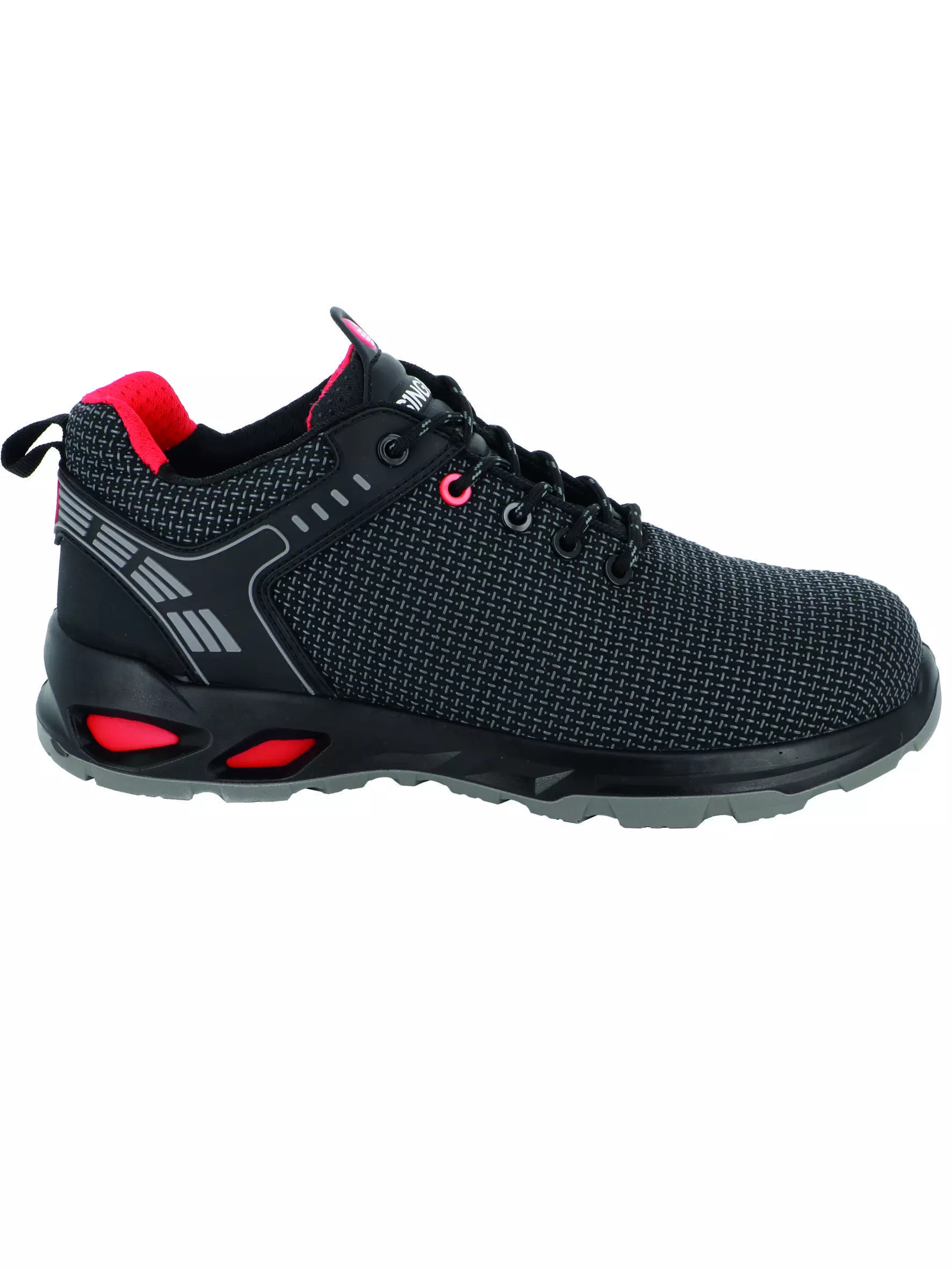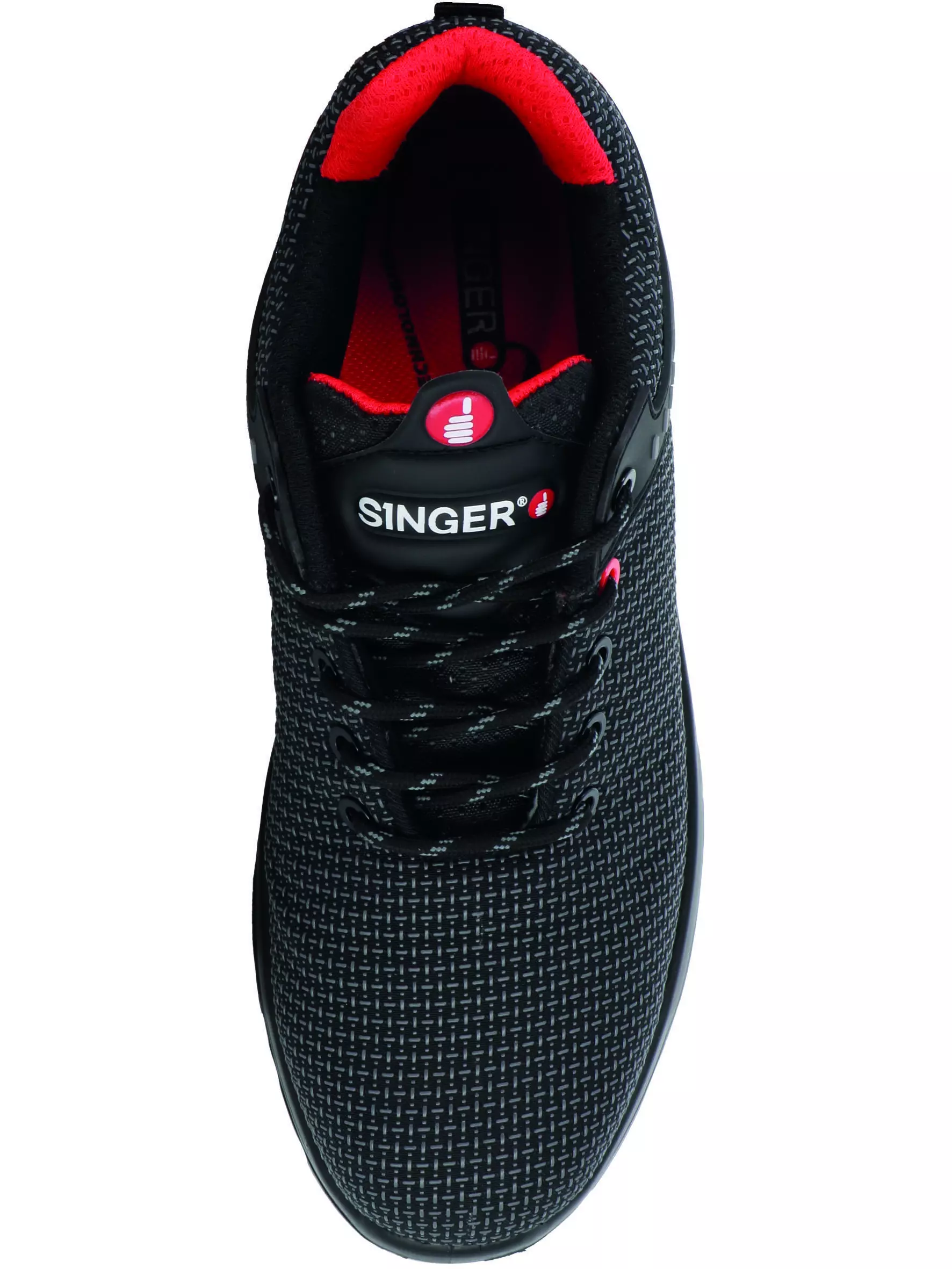


Features You'll Love

Outsole Properties · Shock Absorbing
Shock-absorbing soles provide cushioned comfort, reducing impact and foot fatigue for all-day wear.

Outsole Properties · Anti Slip
Anti-slip soles provide superior grip, keeping you safe and steady on challenging surfaces.

EN ISO 20345 · E
This footwear features energy absorption in the heel region, providing extra cushioning to reduce the impact of walking or jumping on hard surfaces. This feature enhances comfort and helps minimize foot fatigue during long periods of wear.
Singer Safety
Low Cut Safety Shoe, S3S FO SR
Low Cut Safety Shoe, S3S FO SR
4.3 / 5
48,52 €
Choose size
Shipping fee is 7,94 € for orders under 80,00 €
Features You'll Love

Outsole Properties · Shock Absorbing
Shock-absorbing soles provide cushioned comfort, reducing impact and foot fatigue for all-day wear.

Outsole Properties · Anti Slip
Anti-slip soles provide superior grip, keeping you safe and steady on challenging surfaces.

EN ISO 20345 · E
This footwear features energy absorption in the heel region, providing extra cushioning to reduce the impact of walking or jumping on hard surfaces. This feature enhances comfort and helps minimize foot fatigue during long periods of wear.
Product description
The ARMADILLO safety shoes offer comprehensive foot protection for demanding industrial environments. These metal-free low-cut shoes feature a reinforced polyester upper with TPU frame and high tenacity textile pierce-resistant midsole for optimal flexibility and protection. The double-density polyurethane sole provides excellent resistance to hydrocarbons, while the composite toe cap offers 200J impact protection in a lightweight design.
Product Features:
- Metal-free construction for non-magnetic environments
- Composite shockproof toe cap providing 200J impact protection
- High tenacity textile pierce-resistant midsole
- Comfortable padded tongue with gusset
- Ergonomic preformed PU insole
Technical Details:
- Reinforced fabric upper (polyester) with TPU frame
- Textile lining for comfort
- Double-density polyurethane injected sole
- Hydrocarbon-resistant sole
- Weight: approximately 600g per shoe (size 42)
Recommended Applications:
- Light industry
- Finishings
- Maintenance
- Transport
- Logistics
Standards:
- EN ISO 20345:2022 (S3S FO SR)
- European Regulation (EU) 2016/425 on PPE, Category II
- Certified by TUV RHEINLAND (notified body n°0197)
- ISO 9001
EAN: 3660514256507, 3660514256477, 3660514256538, 3660514255845, 3660514255876, 3660514255906, 3660514255937, 3660514255968, 3660514255999, 3660514256026, 3660514256057, 3660514256088
